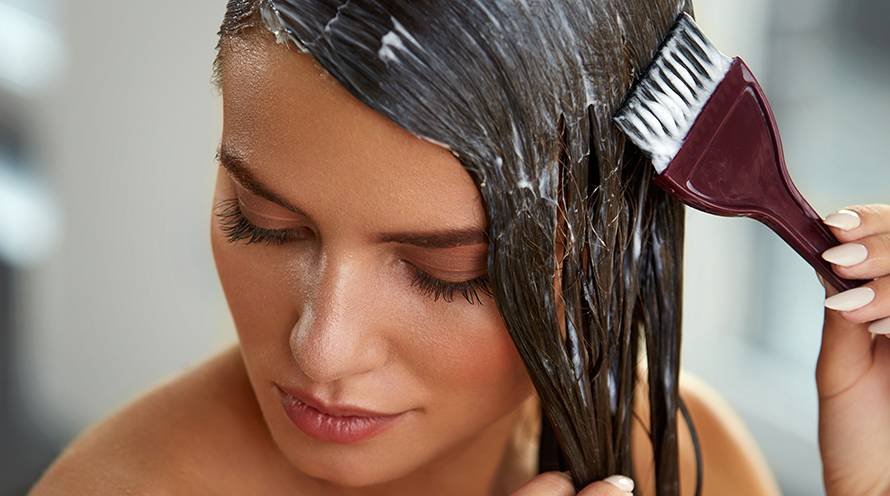When rinsing out hair dye, it is not necessary to use shampoo. The dyeing process typically involves using a permanent or semi-permanent color along with a developer or activator.
To preserve the color’s longevity, rinsing the hair with water alone can be beneficial. This helps to minimize the fading of the color and maintain its vibrancy. However, if a specific dyeing kit recommends using a special shampoo after rinsing, it’s advisable to follow the product’s instructions.
Overall, understanding the particular dyeing process and product used can guide the decision of whether to use shampoo when rinsing out hair dye.

Contents
When Rinsing Out Hair Dye, Do You Use Shampoo?
When it comes to rinsing out hair dye, many people wonder whether they should use shampoo or simply rinse with water. Understanding the effects of using shampoo in hair dye rinse-out and getting expert recommendations for shampoo use are crucial to achieving the desired results and maintaining healthy hair.
Effects Of Using Shampoo In Hair Dye Rinse Out
Using shampoo during hair dye rinse-out can have various effects on the color and condition of your hair. Here are the key effects to consider:
- Color Fading: Shampoo can strip away the color molecules from the hair, causing the dye to fade faster than desired.
- Moisture Loss: Some shampoos contain harsh ingredients that can strip the natural oils from the hair, leading to dryness and brittleness.
- Scalp Irritation: Certain shampoos may contain chemicals that can irritate the scalp, especially if it’s sensitive after the dyeing process.
Expert Recommendations For Shampoo Use
Experts recommend the following when it comes to using shampoo during the hair dye rinse-out process:
- Choose Sulfate-Free Shampoos: Opt for sulfate-free shampoos to minimize color fading and prevent moisture loss.
- Wait 48 Hours: It’s advisable to wait at least 48 hours after dyeing your hair before using shampoo to allow the color to set and reduce the risk of fading.
- Use Color-Specific Shampoos: Consider using shampoos specifically formulated for color-treated hair to prolong the vibrancy of the dye.
By understanding the effects of shampoo in hair dye rinse-out and following expert recommendations for shampoo use, you can preserve the longevity and vibrancy of your hair color while maintaining its overall health.
Rinse Out Methods For Hair Dye
Choosing the right method to rinse out hair dye is crucial for maintaining the color and health of your hair. While there are various techniques, the two primary methods are water-only rinsing and shampoo-assisted rinsing. Each method has its own set of benefits and considerations, so it’s essential to understand the differences between the two to make an informed decision.
Water-only Rinse Out
Water-only rinsing involves simply using water to rinse the hair dye out of your hair without the use of shampoo. This method is gentle on the hair and helps retain the color for a longer period. It’s particularly suitable for individuals with sensitive scalps or those looking to minimize the stripping of natural oils from the hair.
Shampoo-assisted Rinse Out
Shampoo-assisted rinsing, on the other hand, involves using shampoo to help remove the excess hair dye from the hair. Shampoo can effectively eliminate any residual dye while also cleansing the scalp and hair thoroughly. This method is beneficial for individuals who prefer a clean, fresh feeling after dyeing their hair.
Selecting The Right Shampoo
When it comes to rinsing out hair dye, the decision of whether to use shampoo can be a bit perplexing. Selecting the right shampoo is crucial to maintain the vibrancy and longevity of your hair color. In this article, we’ll delve into the considerations for color-treated hair and the ingredients to avoid in shampoo. By understanding these factors, you can make an informed decision when selecting the most suitable shampoo for rinsing out hair dye.
Considerations For Color-treated Hair
Color-treated hair requires special attention to maintain its luster and intensity. When choosing a shampoo for rinsing out hair dye, keep the following considerations in mind:
- Opt for a sulfate-free shampoo to prevent color fading and maintain the integrity of the hair.
- Look for shampoos designed specifically for color-treated hair, as they are formulated to be gentle and preserve the vibrancy of the dye.
- Consider the pH level of the shampoo, as a lower pH helps seal the hair cuticle, locking in the color and preventing premature fading.
Ingredients To Avoid In Shampoo
Some ingredients can be detrimental to color-treated hair, leading to premature fading and damage. When selecting a shampoo for rinsing out hair dye, steer clear of the following ingredients:
- Avoid shampoos containing sulfates, such as sodium lauryl sulfate (SLS) and ammonium lauryl sulfate (ALS), as they can strip the hair of its natural oils and, in turn, fade the hair color.
- Avoid shampoos containing parabens, which can disrupt the endocrine system and potentially lead to hair damage over time.
- Look out for shampoos with high alcohol content, as they can cause dryness and contribute to color fading.
Post-rinse Care For Hair Dye
After rinsing out your hair dye, it is essential to implement a proper post-rinse care routine to maintain the vibrancy and health of your color-treated hair. This includes using the right shampoo, conditioner, and protective styling techniques to ensure your newly dyed hair stays looking fresh and vibrant for as long as possible.
Conditioning After Rinse Out
After rinsing out the hair dye, it’s crucial to follow up with a conditioner specifically formulated for color-treated hair. Color-protecting conditioners help to lock in moisture, prevent color fading, and enhance the overall health and softness of the hair. Look for products with ingredients such as keratin, argan oil, and vitamin E to provide the nourishment your color-treated hair needs.
Protective Styling For Color-treated Hair
Protective styling is a key component of post-rinse care for hair dye. Once you’ve rinsed out the dye and conditioned your hair, consider implementing protective styling techniques such as braids, buns, or twists to minimize exposure to heat styling tools and reduce the risk of damage or color fading. Additionally, using hair accessories like silk scarves or satin hair wraps can help preserve the color and minimize friction and breakage.
Conclusion
Rinsing out hair dye with shampoo depends on the type of dye used. It’s important to follow the instructions provided with the dye to ensure the best results. Consulting with a professional hairstylist can also provide personalized advice for your specific hair type and dyeing needs.
Taking these precautions will ensure that your hair remains healthy and vibrant after dyeing.

